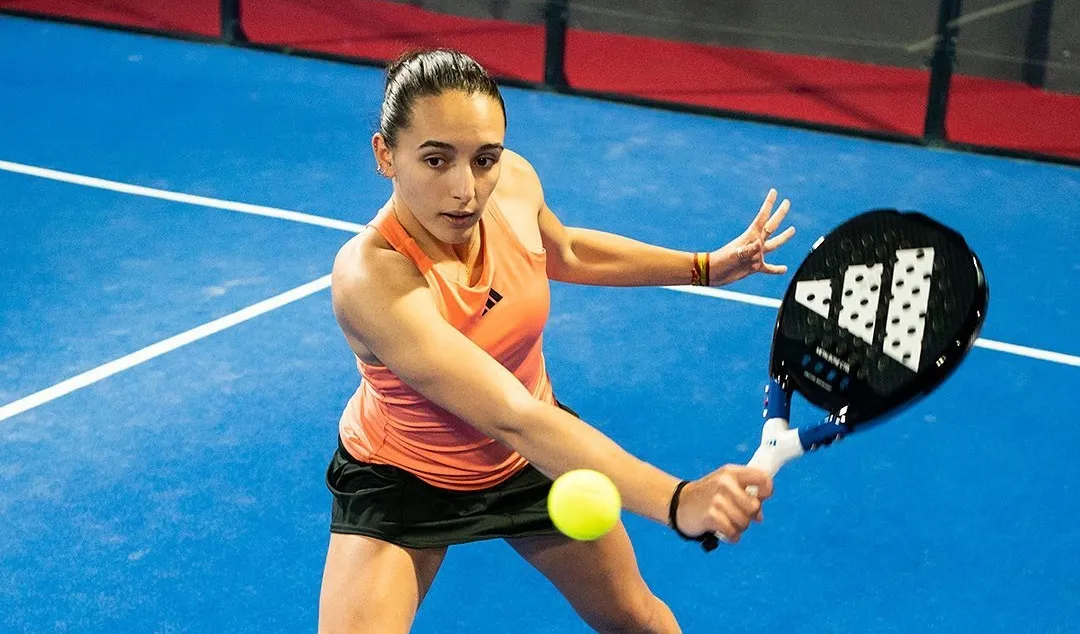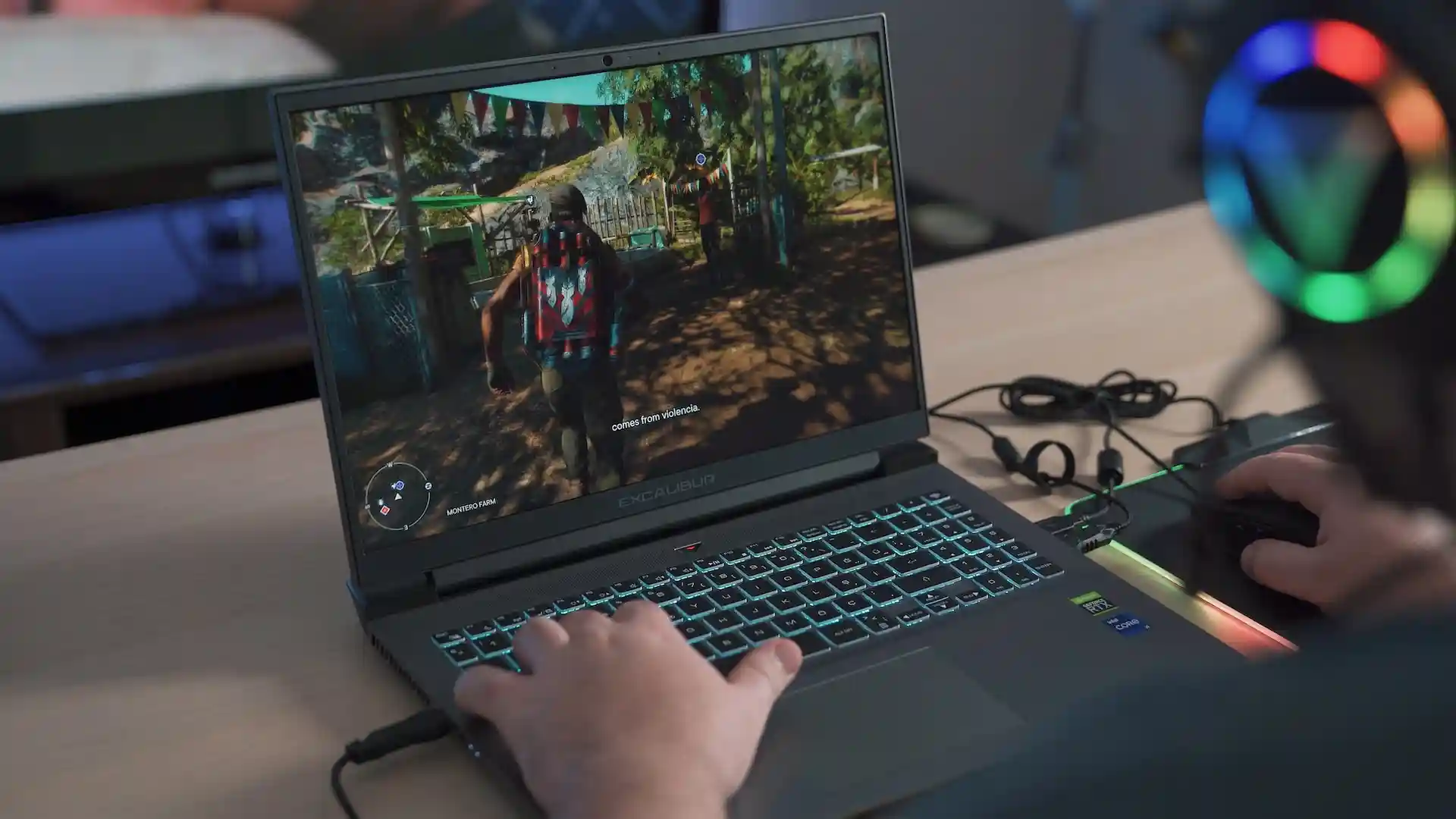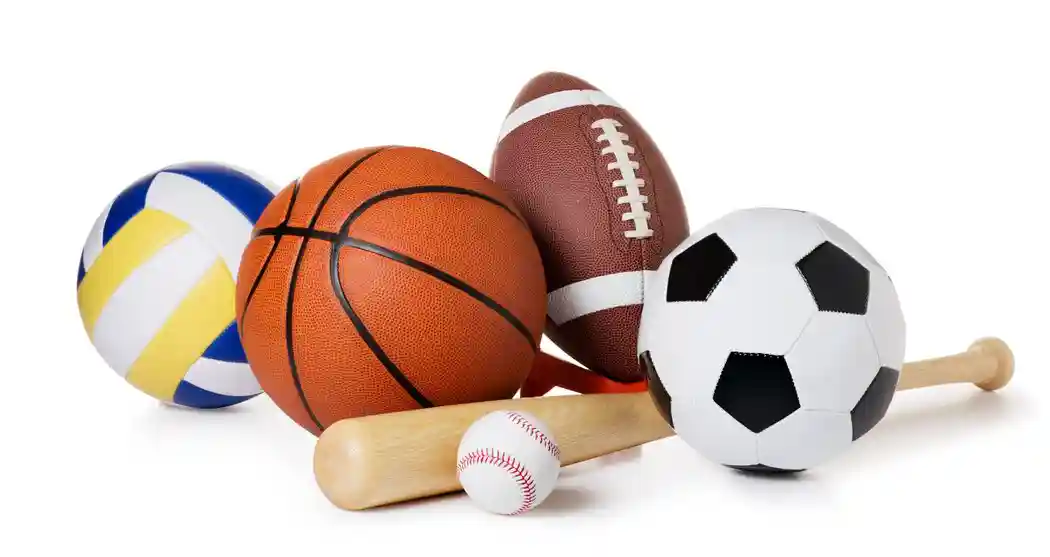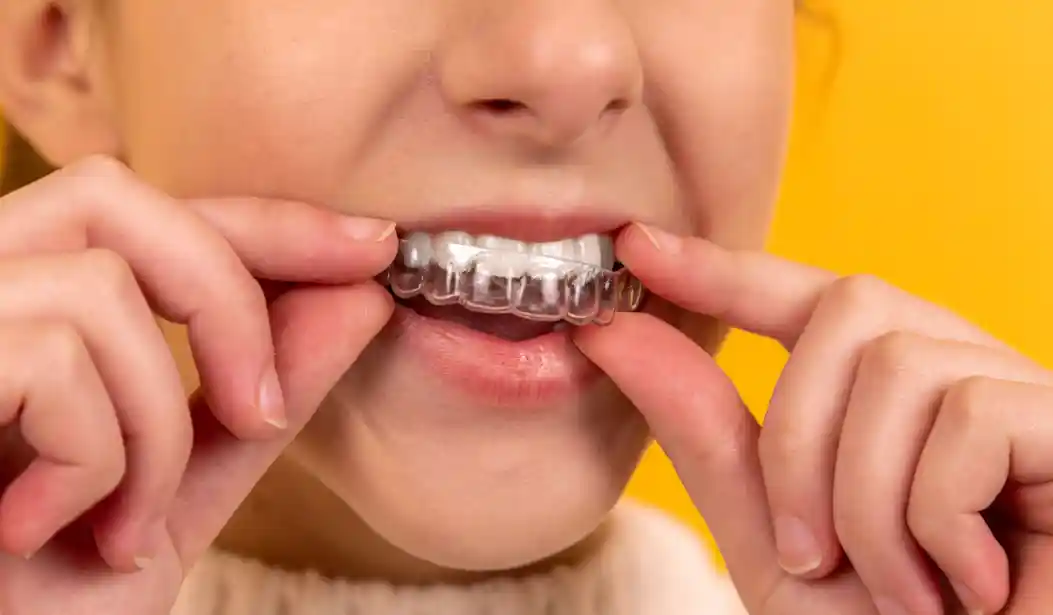Sports
Comparing Models: Which Is the Best Adidas Padel Racket?

The racket is an essential piece of padel gear that impacts player performance and experience on the court. Adidas, a globally recognized sports brand, has capitalized on the surge in popularity of padel by offering an exceptional range of padel rackets tailored to meet diverse player needs. It has been noticed over the years that material quality and technology are major influencers of what makes an Adidas racket the best for padel matches. However, there’s a need to compare models to determine the best. In this article, we will examine the best Adidas padel racket by comparing various models.
Features of the Best Adidas Padel Racket Models
The following are the features of the best Adidas padel racket on the market today. However, you may quickly hop over to these guys to have a close look at them.
Adidas Adipower 3.2
The features of the Adidas Adipower 3.2 are high-density EVA foam, dual exoskeleton technology, and a carbon-aluminized surface. The EVA foam is for powerful shots, and the exoskeleton technology is for increased rigidity, while the carbon-aluminized surface is for enhanced durability. These features make this model of padel racket excellent for aggressive players who dominate from the back of the court. Also, it provides explosive power while maintaining stability. Its only con is that it is slightly heavier, which might not suit players who prioritize maneuverability.
Adidas Metalbone 3.2
The features of the Adidas Metalbone 3.2 are a weight and balance system for customizable play, an octagonal structure for added stiffness and durability, and spin blade technology for improved spin control. The target audience for this model is versatile players looking for adaptability. The pros of this racket are high versatility for balancing power and control and customizability to suit individual preferences. The one con is that the adjustable weight system can be confusing for beginners. To cap it all, the Adidas Metalbone 3.2 is the best Adidas padel racket for players who value adaptability and versatility.
Adidas RX 200 Light
The Adidas RX 200 Light features a fiberglass surface for a soft touch and easy handling, an EVA soft performance core for comfort and precision, and a light frame for better maneuverability. This model is lightweight and forgiving for players still mastering their technique. This makes it easy to use while reducing player fatigue. The single shortcoming of this model is its limited power compared to high-end models. However, for new players prioritizing comfort and ease of use, the Adidas RX 200 Light offers an excellent entry point.
Adidas Adipower CTRL 3.2
The features of the Adidas Adipower CTRL 3.2 are a round shape, EVA high-memory foam, and a carbon-aluminized surface. The surface influences the durability of the racket, and the foam supports responsive handling, while the shape creates a larger sweet spot. These features make the racket ideal for players who rely on tactical gameplay and offer exceptional control for precise shots. The drawback is that this racket is not as powerful as other models in the Adipower range. However, if you are a defensive player who values control and precision, the Adidas Adipower CTRL 3.2 is the best Adidas padel racket for an elevated experience and optimal performance on the court.
Concluding Thoughts on the Best Adidas Padel Racket
Various Adidas padel racket models have been investigated in this article. While the best Adidas padel racket for you ultimately depends on personal preferences, understanding the features and benefits of each model ensures you make an informed choice.
Sports
21 Short Powerful God Quotes in Hindi with Images – Precious Quotes on God

Alright, y’all. We’ve all been there, right? Staring at the sky, wondering if God’s up there listening to us or if we’re just talking to ourselves. Happens to the best of us. But here’s the thing: God motivational quotes in Hindi are a real game-changer when you need a little reminder of His grace and strength. I can’t even begin to tell you how many times I’ve felt stuck, only to turn to one of these short powerful God quotes in Hindi and suddenly find my footing again. So, grab a seat, and let’s dive into 21 Ishwar quotes in Hindi that’ll make you rethink your perspective.
You know, positive God quotes in Hindi can be like little lights on a dark road. Trust me, these quotes won’t just make you feel all “zen” and peaceful—nah, they’ll give you that deep, gut-punch kinda motivation. You know, the one that hits you when you really need it.
Anyway, here’s the kicker: Bhagwan motivational quotes in Hindi are like a spiritual espresso shot. They’re quick, but they’re powerful.
1. भगवान की शक्ति पर विश्वास रखें
“ईश्वर की शक्ति और उसकी कृपा पर विश्वास करना सबसे बड़ा बल है। भगवान आपकी मदद करने के लिए हमेशा तैयार रहते हैं।”
Meaning: Believing in God’s power and grace is the greatest strength. God is always ready to help you.
My Take: Y’all, I’ve been there—feeling like life’s throwing me curveballs left and right. But honestly? The minute I stop and trust that God’s got my back? Things start clicking into place. It’s like when you’re lost and Google Maps says, “You’re almost there.” Hope. Faith. Trust. Just the best combo.
2. भगवान के साथ हर मुश्किल आसान है
“जब भगवान आपके साथ है, तब कोई भी कठिनाई बड़ी नहीं होती।”
Meaning: When God is with you, no difficulty is too big to overcome.
Personal Moment: Can we talk about how brutal life can get sometimes? I remember struggling through a job crisis, thinking I was stuck forever. But then, I came across a short powerful God quote in Hindi just like this one. It hit me—God’s with me. And I made it through. If I can do it, so can you.
3. हमेशा ईश्वर से आशीर्वाद मांगें
“ईश्वर से हर दिन आशीर्वाद मांगें और आपके जीवन में हर राह आसान हो जाएगी।”
Meaning: Ask God for blessings every day, and every path in your life will become easier.
Note to Self: You ever wake up and just feel like, “Oh man, today is definitely not my day”? Yeah, me too. But then I take a breath, say a prayer, and ask God to guide me through. It’s kinda like asking for directions before getting lost—you’re already ahead of the game.
4. आध्यात्मिक सुख भगवान में है
“सच्चा सुख तब मिलता है जब हम भगवान के साथ अपने संबंध को मजबूत करते हैं।”
Meaning: True happiness is found when we strengthen our relationship with God.
Quick Thought: Here’s the thing, I’ve had those “look at my Instagram, everything’s fine” moments. But deep down, real happiness comes from something more. When I spend time praying or reflecting on Ishwar quotes in Hindi, I realize—true peace doesn’t come from stuff or status. It comes from Him.
5. भगवान की ओर मोड़ें अपने विचार
“जब आपके मन में निराशा आए, तो भगवान के बारे में सोचें और शांति पाएंगे।”
Meaning: When you feel despair, think of God, and you will find peace.
Real Talk: There are days I feel like I’m drowning in work, stress, and life’s general messiness. But when I pause and remember God, it’s like someone hit the “reset” button. Suddenly, I’m able to breathe again.
6. विश्वास रखें, भगवान साथ है
“जो ईश्वर में विश्वास रखते हैं, वे कभी हार नहीं सकते।”
Meaning: Those who trust in God can never fail.
Confession Time: I once spent a solid hour Googling how to grow basil. Don’t ask me why I thought it’d be hard, but turns out, it’s really not. I was just second-guessing myself too much. Same thing happens when we trust in God. If we just believe, we never fail. Even if we take a few missteps.
7. भगवान की राह पर चलें
“भगवान की राह पर चलने से आपके जीवन में सच्चे सुख और शांति मिलेगी।”
Meaning: Walking in God’s path will bring true happiness and peace into your life.
Side Note: Yeah, yeah, it sounds cheesy, but hear me out—following God’s guidance is like using a GPS. You might think you know better, but the road ahead is always smoother when you just trust the route.
8. जो होगा, वह अच्छा ही होगा
“जो भगवान ने तय किया है, वही आपके लिए सबसे अच्छा होगा।”
Meaning: Whatever God decides for you will always be the best.
For the Record: I definitely didn’t get into my first-choice college. Ouch. But fast forward a few years, and I wouldn’t change a thing. Turns out, God had a way better plan than I did.
9. भगवान का आशीर्वाद जीवन की सफलता है
“भगवान का आशीर्वाद ही जीवन की असली सफलता है।”
Meaning: God’s blessings are the true measure of success in life.
Pro Tip: Success doesn’t just mean “having it all.” It’s about feeling content with what you have and knowing that God’s blessings are with you every step of the way. The richest person I know is the one who’s at peace with themselves. Seriously. Forget the yachts and mansions—peace is priceless.
10. भगवान के बिना जीवन अधूरा है
“भगवान के बिना जीवन अधूरा है। भगवान हमारी पूरी यात्रा का हिस्सा हैं।”
Meaning: Life is incomplete without God. He is a part of every journey in our life.
Random Fact: Have you ever just felt empty even though everything around you seems perfect? Yeah, same. But that’s when I realized: God wasn’t just part of my life. He is my life.
11. आत्मविश्वास भगवान से आता है
“आत्मविश्वास वही है जो भगवान से प्राप्त होता है। जब हम ईश्वर पर विश्वास करते हैं, तो हम अपने आप में भी विश्वास रखते हैं।”
Meaning: True confidence comes from God. When we trust God, we also trust ourselves.
Relatable Moment: My first herb garden died faster than my 2020 sourdough starter—RIP, Gary. But seriously, once I stopped doubting myself and just trusted the process, things actually started working out. God’s guidance = confidence boost.
12. भगवान पर भरोसा रखें, कभी निराश न हों
“निराशा के समय भी भगवान पर भरोसा रखें, वह आपको कभी अकेला नहीं छोड़ेगा।”
Meaning: Even in times of despair, trust in God, for He will never leave you alone.
Life Hack: You know how sometimes you feel like you’re carrying the weight of the world? Like, the universe just won’t cut you a break? That’s when I remember—God’s with me. And just like that, I get through it.
13. भगवान से सच्ची भक्ति करें
“सच्ची भक्ति वह है, जब हम भगवान के प्रति अपने दिल से प्रेम और श्रद्धा रखते हैं।”
Meaning: True devotion is when we love and revere God from the heart.
Little Pep Talk: Stop trying to “fake” it. I’ve done it—showing up to church just ‘cause it’s Sunday. But, true devotion? It comes from your heart. If you’re not feeling it, don’t force it. Trust that God knows.
A Little Reflection
Alright, so those are some of my personal favorites. If you ever feel like the world is caving in, just hit “pause” and read through these God motivational quotes in Hindi. They remind you that even on your worst days, God’s love is the one thing that’s steady. You know, it’s funny how easy it is to forget how much we’re loved. But reading these short powerful God quotes in Hindi brings me back to the center.
And hey, Ishwar quotes in Hindi are just the kind of thing you can keep close—almost like that best friend who always knows exactly what to say. Bhagwan motivational quotes in Hindi will remind you to keep your faith, stay humble, and push through life’s challenges.
Trust me, if I can get through my mini existential crisis about a basil plant, you’ve got this.
Wrapping It Up
So, yeah. If you ever find yourself questioning things—whether it’s a big life decision or just a bad day—turn to these positive God quotes in Hindi. They work. They just do. Even when the world feels chaotic, the knowledge that God’s with you is all you need to keep moving forward. One step at a time.
Stay strong, stay faithful, and remember: God’s got your back.
Sports
400+ Unique Sports Day Names for Every Athletic Occasion (2023)

Alright, so you’ve got your school sports day coming up—or maybe it’s a community sports meet, or even an office competition (hey, whatever works). Either way, sports day names are essential. They set the stage, the mood, and help get everyone pumped to break a sweat. I mean, let’s be real—if your event’s title is “The Race,” no one’s going to remember it, right? You need something memorable, something that sticks in people’s minds.
So here’s the deal: I’ve rounded up over 400 unique sports day names—each one perfect for a school, a local community event, or any kind of athletic occasion. Ready? Let’s jump in, because there’s a lot to cover.
The Power of a Name
Why do sports day names matter so much? Well, first off, they’re the first impression you get to make. Like, if you name your school’s annual event “The Great Race,” yawn, but if you call it “The Champions’ Chase” or “Medal Madness”? You bet that’s going to grab attention. People are already imagining themselves in the winner’s circle. Boom. Motivation, right there.
When you’re picking a name, consider the vibe. You’re looking for something that’s fun, but also competitive—whether it’s sports day names for school or for an adults-only corporate meet. I mean, I’ve seen more than one grown adult get way too into a 100m race at the company picnic. No judgment. I was the one trying to stretch beforehand.
School Event Names—For the Kids, By the Kids
Let’s talk sports day names for school first. These need to be catchy, fun, and something the kids can chant. Trust me, there’s nothing more annoying than hearing a school chant “Go team go!” for the 17th time in an hour. Get a little creative!
Classic School Sports Day Names
- The Big Playoff
- Sprint to Glory
- Medal Mania
- The Schoolyard Olympics
- Track to Triumph
- Fast Lane Field Day
- Power Relay
- Victory Dash
- The Champion’s Race
- The Final Countdown Challenge
You know what I love about these names? They’re simple, but they hit all the right notes. The kids hear “Champion’s Race” and boom, they’re already picturing themselves winning the trophy. It’s all about setting that expectation. The kids will be extra motivated to run, jump, and race just to hear the announcer call their name.
Fun & Silly Sports Day Names
- The Happy Hustle
- Giggles & Gold Medals
- Leap for Laughs
- Jump & Run Day
- Race to the Moon (ok, not literally, but hey, imagine)
- Kids on the Move
- Giggles & Go
- Hurdles of Fun
- The Sprinting Spree
- The Wacky Dash
Ah, these are more for the young ones—the ones who’ll race for candy and a high-five. I once watched a group of third-graders race so hard I thought they might actually break the sound barrier. Spoiler: they didn’t, but it was adorable.
Theme Names: Get Your Creative Juices Flowing
Now, here’s where things get fun. If you’re thinking, “I want to make this more than just about running,” then it’s time to slap a sports day theme name on it. Make it weird. Make it cool. Make it something they’ll talk about for years. You know, like the time we called our school sports day “The Superhero Showdown,” and Timmy showed up in a cape and… did not win the race. But he looked good doing it.
Superhero & Fantasy Sports Day Themes
- Avengers Assemble!
- The Race of the Legends
- The Magic Mile
- Battle of the Champions
- The Gladiator Games
- Legends of the Track
- Heroic Sprint
- Super Speedsters
- The Fantastic Race
- Heroes in Action
I mean, who doesn’t want to feel like a superhero for a day? One year we did “Superhero Sports Day,” and I had to wear a cape while trying to set a new 400m personal record. Spoiler: the cape didn’t help. But it sure made me feel like I could fly.
Seasonal Sports Day Theme Names
- Summer Sprint Fest
- The Winter Relay Race
- Spring Sprint Showdown
- Autumn Dash
- Snowflake Sprint
- The Sun & Sprint Games
- Cold Rush Challenge
- The Great Outdoors Games
- Fall Field Frenzy
- The Winter Games of Victory
The beauty of seasonal themes? You can literally adjust the activities to fit the weather. Imagine sprinting through a snowstorm—not fun. But the idea of it? Honestly? Worth it.
Unique Sports Day Names for Unforgettable Events
Now, let’s dive into unique sports day names. You’re hosting a sports meet, but you’re like, “I want something that actually stands out.” So you go all out. These names scream “this isn’t your average race day.”
Memorable Sports Meet Names
- Track of Legends
- The Speed Surge
- Victory Lap Challenge
- The Athletic Vanguard
- Race for the Gold
- The Dream Team Dash
- Unstoppable Strides
- Sprint for Success
- Champions’ Quest
- Thunder Track Trials
Y’all, pick one of these and people will be talking about this sports meet until next year’s event. Promise. Trust me, I once tried to host a “Speedster’s Showdown” at a local track. Yeah, let’s just say the only one who didn’t trip was the guy who brought a pet iguana to the event. That was… memorable.
Fun & Easy-Going Sports Day Names
- Fast & Fun
- Race to Laugh
- The Giggle Games
- Hurdles of Fun
- Sprint for Smiles
- The Leap Day Challenge
- Victory Vibes
- The Dash to the Finish
- The Track of Triumph
- The Fast Track
These names are for when you want to keep it light. For me, those are always the best kinds of sports days—when people aren’t too focused on winning, and more on just having fun. Like that time at the office “race” when Karen from HR wore high heels and totally still won. And, I’m not saying it was a little rigged, but she was definitely practicing in the parking lot for a week. Noted, Karen.
Picking the Perfect Sports Day Name
Here’s the thing: sports day names for school, sports meet names, or even unique sports day names don’t have to be perfect. They just have to make people smile, get them excited, and maybe make them feel like they’ve got this—even if it’s just for one glorious, sweaty afternoon.
At the end of the day, a good name is the one that sets the tone. If you’re pulling in the crowd with “The Ultimate Race,” that’s your name. If it’s “Fast & Furious Fun” for the 4-year-olds? Heck yes. Go for it.
Anyway, here’s the kicker: When you’ve picked your sports day names for school, make sure to have fun. Maybe add a theme, maybe keep it simple. But always remember—this is about creating a memory. Plus, it’s always a bonus when someone gets so into the event they accidentally knock over a water cooler. Been there, done that, learned my lesson.
So go ahead, pick a name, get people excited, and make this the best sports day yet. It’s gonna be a wicked good time.
Sports
UFABET Agent Guide for Safe Betting and Financial Stability

In the world of online sports betting and casino games, choosing the right platform is essential to ensure a safe and secure betting experience. UFABET is one of the leading online betting sites in Thailand and across Southeast Asia, offering a wide range of sports betting options, casino games, and live dealer experiences. However, for users to maximize their experience on the site while ensuring their financial stability, it is crucial to understand the role of a UFABET agent. This guide will walk you through everything you need to know about UFABET agents, how they contribute to a safe betting experience, and how to maintain financial stability while betting.
What is a UFABET Agent?
A UFABET agent acts as an intermediary between the platform and the users. The agent provides several services to players, such as account creation, deposits, withdrawals, customer support, and sometimes even providing exclusive bonuses and promotions. They work to ensure that users have seamless access to all of UFABET’s offerings, whether it be sports betting or online casino games.
There are many benefits to working with an agent, especially if you’re new to the betting world or unfamiliar with the intricacies of online sports betting. An agent can guide you through the platform’s features, help with troubleshooting any issues, and ensure your funds are handled responsibly.
Why Should You Use a UFABET Agent?
1. Safety and Security
One of the primary concerns for any online bettor is the safety and security of their personal and financial information. ตัวแทน ufabet are usually vetted and work with the official UFABET platform to ensure that all transactions are secure. They follow strict protocols to prevent fraud and ensure that deposits and withdrawals are processed efficiently.
Moreover, agents are well-versed in the various scams and risks associated with online betting. They can help protect you from malicious websites or suspicious activities by offering advice and guidance on how to stay safe while gambling online.
2. Expert Assistance
Experienced UFABET agents have a deep understanding of the betting platform, its terms, and conditions. This can be immensely beneficial for new players who might find the platform overwhelming. An agent can help you navigate the different betting options, explain the odds, and offer tips on making informed bets. Additionally, agents often provide access to exclusive promotions or bonuses that can give you a head start.
3. Faster Transactions
Having a dedicated agent can help you with faster transactions. For example, withdrawals may be expedited when handled by an experienced agent, ensuring that you receive your winnings without unnecessary delays. Agents can also help you avoid potential errors when making deposits or cashing out, which can save you time and stress.
4. Access to Bonuses and Promotions
Many UFABET agents have special relationships with the platform and may offer exclusive bonuses, promotions, and betting opportunities that are not readily available to all users. Whether it’s a bonus for new members, free bets, or special deals for long-term customers, an agent can help you take advantage of these opportunities, ensuring that you get the most out of your betting experience.
Maintaining Financial Stability with UFABET
While betting can be fun and potentially lucrative, it is also important to approach it with a responsible mindset, especially when it comes to managing your finances. Below are some essential tips for maintaining financial stability while using UFABET:
1. Set a Budget
Before you start betting, it’s essential to set a budget. Decide how much money you’re willing to invest and stick to it. Betting can be unpredictable, and it’s easy to get caught up in the excitement and overspend. By setting a budget, you can prevent yourself from placing bets beyond your means.
Agents can help by offering guidance on how to manage your bankroll, ensuring that you don’t wager more than you can afford to lose.
2. Bet Responsibly
Betting should be a form of entertainment, not a way to make quick money. Always bet responsibly and never chase losses. If you find that you’re losing more than expected, take a break and reassess your strategy. An agent can help you track your bets and offer advice on how to pace your betting activity.
3. Utilize Payment Methods Wisely
UFABET offers various payment methods for deposits and withdrawals. It’s important to choose a payment method that is both convenient and secure. UFABET agents can assist you in selecting the best options, ensuring that your funds are handled safely and with minimal fees.
Moreover, some payment methods may allow for quicker withdrawals or more convenient access to your funds, which can contribute to better financial management.
4. Take Advantage of Free Betting Tips and Resources
Many UFABET agents offer free betting tips, tutorials, and guides to help players make informed decisions. These resources can be crucial in minimizing risk and ensuring that you are betting with knowledge rather than on impulse. By following expert tips and taking the time to learn about the different sports and games you’re betting on, you can increase your chances of making profitable decisions.
Final Thoughts
The key to a successful and sustainable betting experience with UFABET is choosing the right agent and managing your finances responsibly. A trusted UFABET agent can provide invaluable assistance in navigating the platform, ensuring that your betting is safe, secure, and enjoyable. By setting a budget, betting responsibly, and using the right financial tools, you can make the most of your time on UFABET while maintaining financial stability. Whether you’re a seasoned bettor or a beginner, working with a UFABET agent can elevate your betting experience while protecting your finances.
In conclusion, always remember that betting is a form of entertainment and should be approached with caution. By following these guidelines and using a reputable UFABET agent, you can enjoy a safe, fun, and financially responsible betting experience.
-

 Travel1 year ago
Travel1 year agoOnboardicafe.com Login Exploring the Delights of Onboardicafe
-

 Food & Recipes1 year ago
Food & Recipes1 year agoFive Food Products You Must Avoid Giving to Your Infant
-

 Sports1 year ago
Sports1 year agoThe Most Popular Sports In The World
-

 Technology6 months ago
Technology6 months agoSustainable Practices in Video Production: Reducing the Carbon Footprint
-

 Sports11 months ago
Sports11 months agoSmart Solutions for Football Field Maintenance
-

 Health & Fitness12 months ago
Health & Fitness12 months agoSuboxone Tooth Decay Lawsuits and the Pursuit of Justice Against Indivior
-

 Sports10 months ago
Sports10 months agoWearable Tech and the Future of Football
-

 Entertainment1 year ago
Entertainment1 year agoNavigating the Web: The Ultimate List of Tamilrockers Proxy Alternatives










